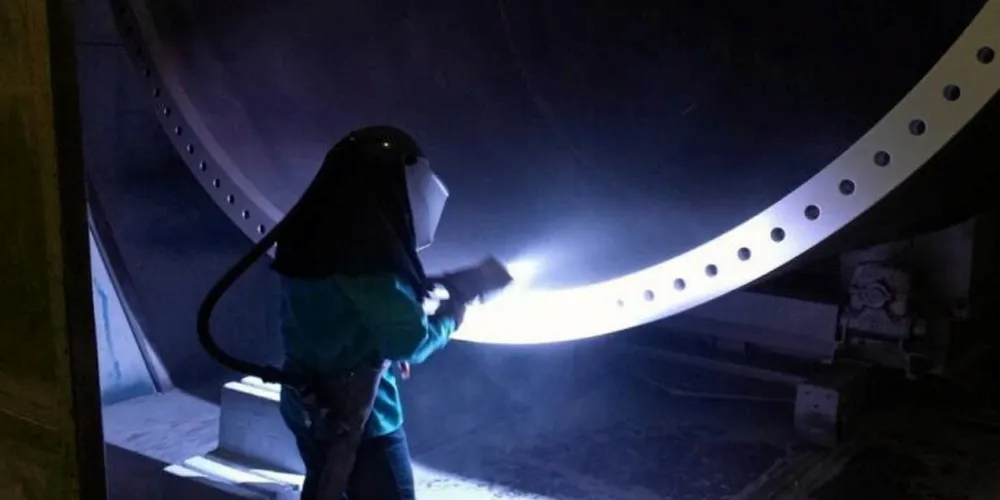'Helpful clarity' | US Treasury issues IRA domestic content rules on bonus tax credit
While sector advocates see sufficient clarity to make investment decisions, questions remain on what components are structural versus manufactured

The US renewables sector welcomed draft Treasury Department guidance on domestic content requirements in the nation’s landmark climate bill that could unlock billions of investment into local supply chains.
The law provides $369bn in tax credits and other incentives for clean energy but its impact has so far been muted as developers await clarification on the applicability of its many provisions.
“The domestic content bonus under the IRA will boost American manufacturing, including in iron and steel,” said Treasury Secretary Janet Yellen on Friday. “These tax credits are key to driving investment and ensuring all Americans share in the growth of the clean energy economy.”
Under the IRA, renewable energy developers can write off up to 30% of a project's capex through the investment tax credit (ITC) or opt for the $26/MWh production tax credit (PTC) - if certain apprenticeship and wage requirements are met.
Meeting domestic content requirements ramps these by another 10%, assuming projects also fulfill any one of the following: have a maximum net output of less than 1MW; began construction before 29 January this year; or satisfies the IRA’s prevailing wage and apprenticeship mandates.
“Having clear rules of the road is imperative for businesses seeking to invest in America’s clean energy future,” said Gregory Wetstone, president of the American Council on Renewable Energy (ACORE), adding that Treasury's guidance “provides helpful clarity”.
“We look forward to projects moving forward under this guidance immediately,” he said.
Tiered structure
The notice separates domestic content into two categories: a first tier of structural elements that must meet 100% American-made iron and steel requirements, and a second, lower tier for manufactured products.
Under the guidance, a manufactured onshore wind or solar component is considered US-made if 40% the total costs can be attributed to domestic subcomponents and manufacturing processes (20% for offshore wind).
“This distinction between steel and iron items on one hand, and manufactured products on the other hand, has been a source of significant uncertainty in the market,” said Kevin Pearson and Michael Such, writing for legal firm Stoel Rives.
While the language of the guidance “provides some additional clarity regarding this distinction, it likely will not resolve all questions that arise with respect to specific components of a project,” they noted.
A table released with the guidance illustrates where confusion may remain. For offshore wind, while towers and jacket foundations are considered structural and must meet 100% US-made iron and steel requirements, monopiles and transition pieces are regarded as manufactured components and only need to meet the 20% threshold.
Export and inter-array cables are also manufactured products by Treasury's notice.
In a note to clients, Norton Rose Fulbright law firm said the guidelines require a more complicated analysis to qualify than expected.
“They will make it harder for projects to qualify that use solar modules, nacelles or other components that contain any imported parts,” it said.
Manufacturers will be required to disclose their costs to make components delivered to the project site and to detail them among the various inputs used to make them.
"This information will be difficult for project developers to get manufacturers to disclose," according to the law firm.
Liz Burdock, CEO of trade group Business Network for Offshore Wind, asserted that the guidance “provides necessary certainty for the development of a robust offshore wind supply chain in America." She added that having this enables the sector to “better plan for and utilise the benefits of the IRA”.
Domestic content stipulations for manufactured products rises starting in 2026 for onshore wind and solar and 2027 for offshore wind to 55% of total costs.
“This guidance will help provide clarity around its eligibility requirements, unlocking billions of dollars of investment in American clean energy manufacturing and its workforce,” said industry advocate American Clean Power Association's chief advocacy officer JC Sandberg.
Treasury guidance on classification of renewable energy components
Project Component | Categorisation |
Utility scale photovoltaic system | |
Steel photovoltaic module racking | Steel/Iron |
Pile or ground screw | Steel/Iron |
Steel or iron rebar in foundation (e.g., concrete pad) | Steel/Iron |
Photovoltaic module (which includes the following Manufactured Product Components, if applicable: photovoltaic cells, mounting frame or backrail, glass, encapsulant, backsheet, junction box (including pigtails and connectors), edge seals, pottants, adhesives, bus ribbons, and bypass diodes) | Manufactured Product |
Inverter | Manufactured Product |
Onshore wind facility | |
Tower | Steel/Iron |
Steel or iron rebar in foundation (e.g., spread footing) | Steel/Iron |
Wind turbine (which includes the following Manufactured Product Components, if applicable: the nacelle, blades, rotor hub, and power converter) | Manufactured Product |
Wind tower flanges | Manufactured Product |
Offshore wind facility | |
Tower | Steel/Iron |
Jacket foundation | Steel/Iron |
Wind turbine (which includes the following Manufactured Product Components, if applicable: the nacelle, blades, rotor hub, and power converter) | Manufactured Product |
Transition piece | Manufactured Product |
Monopile | Manufactured Product |
Inter-array cable | Manufactured Product |
Offshore substation | Manufactured Product |
Export cable | Manufactured Product |